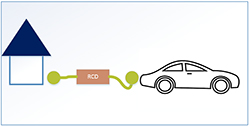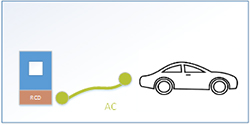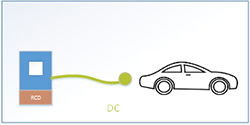When sourcing and installing a public charging station there specific considerations to take into account.
All public charging stations should be either Mode 3 or 4 and must comply with the relevant safety standard. They should also have the recommended connectors.
Before purchasing a charging station (and other electric vehicle supply equipment (EVSE)) you should assure yourself that the product is suitable for use in New Zealand.
It is recommended that you request that the supplier provides you with a supplier declaration of conformity (SDoC) and a test certificate stating that the EVSEhas been tested to the relevant standard.
In particular, you should check that:
A ‘mode’ describes the safety communication protocol between electric vehicles and charging stations. These are internationally recognised definitions. Only Mode 3 and Mode 4 are suitable for public charging infrastructure in New Zealand. The modes are outlined below:
| Charging mode | Description | Recommended use |
Mode 2 - commercial |
|
Suitable for controlled environments with restricted access. Eg hotels, fleet car parks and repair facilities. |
Mode 3 |
|
Suitable for public charging infrastructure. |
Mode 4 |
|
Suitable for public charging infrastructure. |
*Refer to the ‘Charging an electric vehicle’ section for further information about electric vehicles and infrastructure that can affect the rate charge.
*Mode 1 and Mode 2 are for home charging and not covered in this guidance as they are not appropriate for public use. Find out more here(external link).
No person may install an electric vehicle charging station unless they are licensed and competent to do so.
Depending on the existing infrastructure, the installation may also require electrical works by a certified electrician or electrical engineer. A competent electrician or electrical engineer will be able to advise you on what is required.